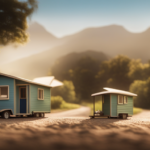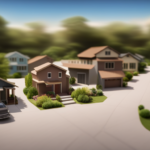Beginners Guides
How Big Is The Tiny House Community In The Us

Have you ever been curious about the size of the tiny house movement in the United States? The reality is, it’s larger than you may imagine.
Over the past decade, the tiny house movement has gained significant traction, capturing the interest and imagination of people across the country. As a passionate advocate for minimalistic living myself, I’ve delved into the world of tiny homes to uncover the fascinating details and statistics behind this growing trend.
In this article, we’ll explore the history and origins of the tiny house movement, the factors driving its popularity, and the benefits and challenges of living in a tiny home. We’ll also take a closer look at the growth and spread of the tiny house community, the innovative designs and features that have emerged, and the financing and legal considerations involved in owning a tiny house.
Finally, we’ll examine the impact of the tiny house movement on housing trends and discuss the future outlook for this thriving community.
So, let’s dive in and discover just how big the tiny house community really is in the US.
Key Takeaways
- The tiny house community in the US is growing rapidly, with over 10,000 tiny houses currently and 1,000 new ones being built each year.
- Tiny houses offer a solution to the affordable housing crisis by making homeownership more attainable.
- The tiny house movement promotes sustainability and environmental stewardship through the use of energy-efficient materials, renewable energy sources, and off-grid capabilities.
- The future outlook for the tiny house community is promising, with increasing popularity, innovative designs, and growing support from policymakers.
History and Origins of the Tiny House Movement
The tiny house movement has its roots in the desire for a simpler, more sustainable lifestyle. It is a cultural phenomenon that has gained significant traction over the past decade. The movement promotes the idea of living in small, efficient spaces that are tailored to individual needs and preferences.
Tiny houses are typically less than 500 square feet in size and can be built on wheels or on a permanent foundation.
One of the major factors driving the popularity of tiny homes is their environmental impact. Tiny houses are designed to be energy-efficient and use fewer resources compared to traditional homes. They often incorporate sustainable materials, such as reclaimed wood and recycled materials, reducing their carbon footprint. Additionally, the smaller size of tiny houses leads to reduced energy consumption for heating, cooling, and lighting. This focus on sustainability has attracted many individuals who are concerned about the environment and want to minimize their ecological footprint.
The tiny house movement has gained cultural significance as well. It represents a rebellion against the consumerist culture that has dominated society for decades. By downsizing and living in smaller spaces, people are challenging the notion that bigger is always better. The movement also promotes a sense of community and simplicity, with many tiny house owners embracing minimalist lifestyles.
As the tiny house movement continues to grow, factors driving its popularity include a desire for financial freedom, increased mobility, and the opportunity to live more sustainably.
Factors Driving the Popularity of Tiny Homes
One cannot deny the sheer appeal of its compact allure, prompting a surge in demand for these pint-sized abodes. The popularity of tiny homes can be attributed to several factors driving their current trend.
-
Sustainability: With growing concerns about the environment, more people are seeking sustainable living options. Tiny homes offer a reduced ecological footprint due to their smaller size, resulting in lower energy consumption and reduced waste generation. Many tiny house owners also opt for eco-friendly materials and renewable energy sources, further enhancing their sustainability.
-
Minimalism: The rise of minimalism as a lifestyle choice has also contributed to the popularity of tiny homes. People are embracing a simpler way of living, prioritizing experiences and relationships over material possessions. Tiny homes provide an opportunity to declutter and live with only the essentials, promoting a more minimalist lifestyle.
-
Financial Freedom: Tiny homes offer an affordable housing alternative. With rising housing costs and stagnant wages, many individuals and families find it difficult to own a traditional house. Tiny homes provide a more affordable option, allowing people to live debt-free and save money for other priorities.
Transitioning into the next section about the benefits of living in a tiny house, it is clear that these factors have contributed to the growing interest in this unique housing option.
Benefits of Living in a Tiny House
Imagine living in a compact space that promotes sustainability, minimalism, and financial freedom. That’s what living in a tiny house offers.
One of the biggest benefits of living in a tiny house is its cost effectiveness. Tiny houses are significantly cheaper to build and maintain compared to traditional houses. The reduced floor area means lower construction costs, and the smaller size also results in lower utility bills. Additionally, living in a tiny house often means a simplified lifestyle, which can lead to reduced expenses on material possessions and unnecessary expenses.
Another benefit of living in a tiny house is its sustainability. Tiny houses require fewer resources to build and maintain, resulting in a smaller carbon footprint. They often utilize eco-friendly materials and energy-efficient systems, making them more environmentally friendly. Moreover, living in a tiny house encourages a minimalist lifestyle, which promotes conscious consumption and reduces waste.
Transitioning to the subsequent section about challenges and considerations for tiny house living, it’s important to note that while living in a tiny house offers numerous benefits, it also comes with its own set of challenges.
Challenges and Considerations for Tiny House Living
Get ready to face a whole new set of hurdles and factors to consider when you embark on the adventure of living in a cozy, sustainable dwelling. While there are numerous benefits to living in a tiny house, it’s important to be aware of the challenges and considerations that come with this lifestyle.
One of the main challenges of tiny house living is the limited space. Downsizing to a smaller living area means that you will have to be strategic about your belongings and prioritize what is truly essential. Additionally, the lack of storage space can be a constant struggle, requiring creative solutions such as utilizing multi-functional furniture and implementing smart storage solutions.
Another consideration is the need for zoning and building codes. Tiny houses often face legal challenges due to their unconventional nature. It’s crucial to research and understand the regulations in your area before investing in a tiny house.
Furthermore, living in a small space can be challenging for those who value privacy and personal space. It’s important to have open and honest conversations with your partner or family members about boundaries and find ways to create separate areas within the tiny house.
To evoke emotion in the audience, here is a table showcasing the challenges and considerations of tiny house living:
| Challenges | Considerations |
|---|---|
| Limited space | Downsizing and prioritizing belongings |
| Storage limitations | Utilizing multi-functional furniture and smart storage solutions |
| Zoning and building codes | Researching and understanding regulations |
| Privacy and personal space | Establishing boundaries and creating separate areas |
Despite these challenges and considerations, the tiny house community continues to grow and spread across the United States. Transitioning to a tiny house lifestyle requires careful planning and consideration, but the rewards can be great.
Growth and Spread of the Tiny House Community
The ever-expanding trend of living in compact, sustainable dwellings has captivated individuals from all walks of life, with the allure of simplicity and freedom beckoning them to embrace a more minimalist lifestyle. The tiny house community has experienced significant growth in recent years, reflecting a shift in societal values and a desire for a more sustainable and affordable way of living.
According to the American Tiny House Association, there are currently over 10,000 tiny houses in the United States, with an estimated 1,000 new ones being built each year. This growth is not only evident in the number of tiny houses being constructed but also in the impact it has on the housing market. Many cities and towns are now revising their zoning laws to accommodate tiny houses, recognizing the need for alternative housing options.
The growth of the tiny house community has evoked a sense of excitement, adventure, and freedom in its followers. People are drawn to the idea of downsizing and simplifying their lives, allowing them to focus on experiences rather than material possessions. The tiny house movement also promotes sustainability and environmental stewardship, appealing to those who are passionate about reducing their carbon footprint. Additionally, the affordability of tiny houses makes homeownership more attainable for many individuals, providing an alternative to the traditional housing market.
As the tiny house community continues to grow, regional differences in the movement become more pronounced. Different areas of the country have varying levels of acceptance and support for tiny houses, resulting in unique challenges and opportunities for those interested in joining the movement.
Regional Differences in the Tiny House Movement
Although you may assume that the tiny house movement is widely accepted and supported across the country, you might be surprised to learn that regional differences in acceptance and support can pose unique challenges and opportunities for those interested in joining the movement.
Regional regulations play a significant role in determining the feasibility of building and living in a tiny house. Some areas have embraced the concept, creating zoning laws and building codes that accommodate tiny houses. These regions often have designated communities or areas where tiny houses are allowed, making it easier for individuals to find suitable land and obtain the necessary permits.
On the other hand, certain regions have stricter regulations, making it more difficult for tiny house enthusiasts to find legal places to live. Community support also varies based on location. Some areas have active tiny house communities with regular meetups, workshops, and resources for individuals looking to join the movement. In contrast, other regions may lack organized communities and support networks, making it harder for newcomers to connect with like-minded individuals.
Understanding these regional differences is crucial for those interested in the tiny house movement, as it can help inform decisions about where to live and how to navigate local regulations. Transitioning to the subsequent section about innovative tiny house designs and features, it is important to note that these regional differences also influence the types of designs and features that are popular in specific areas.
Innovative Tiny House Designs and Features
One exciting aspect of the tiny house movement is the constant innovation and creativity seen in the designs and features of these unique dwellings. Tiny house enthusiasts are continually pushing the boundaries of what is possible, coming up with innovative designs that maximize space and provide comfortable living solutions.
Innovative Tiny House Designs:
One example of innovative tiny house design is the use of multi-functional furniture. Many tiny houses feature pieces that serve multiple purposes, such as a sofa that can transform into a bed or a dining table that can be folded away when not in use. This allows for flexibility and maximizes the use of limited space. Another design trend is the incorporation of loft spaces. By utilizing vertical space, tiny houses can provide additional sleeping areas or storage. Additionally, some tiny houses are designed to be transportable, allowing owners to move their homes to different locations as desired.
Sustainable Tiny House Features:
Sustainability is also a key focus in many tiny house designs. These homes often incorporate eco-friendly features such as solar panels, composting toilets, and rainwater collection systems. Some tiny houses even use reclaimed materials, reducing the environmental impact of construction. By incorporating these sustainable features, tiny house owners can live off-grid and minimize their carbon footprint.
Transition:
While the innovative designs and sustainable features of tiny houses make them attractive to many, it is important to consider the financial and legal considerations of owning one.
Financing and Legal Considerations for Tiny House Ownership
When it comes to financing and legal considerations, navigating the financial landscape and legal requirements can be a bit like walking through a legal and financial maze.
Tiny house financing is a topic that requires careful consideration due to the unique nature of these homes. While traditional mortgages may not apply to tiny houses, there are alternative financing options available. Some individuals choose to finance their tiny homes through personal loans, while others use RV loans, which are more commonly used for recreational vehicles. Additionally, some tiny house enthusiasts opt for crowdfunding or saving up to pay for their homes in cash.
Legal requirements for tiny house ownership vary from state to state and even within different municipalities. Zoning regulations, building codes, and minimum square footage requirements can all impact the legality of owning a tiny house. It is important for prospective tiny house owners to research and understand the specific legal requirements in their desired location. Some areas have embraced the tiny house movement and have created specific zoning ordinances to accommodate these homes, while others have stricter regulations.
Understanding the financing and legal considerations is crucial for anyone interested in joining the tiny house community. By familiarizing oneself with the available financing options and researching the legal requirements, individuals can make informed decisions about their tiny house ownership. This knowledge will help ensure a smooth process and avoid any unexpected obstacles along the way.
As we delve into the impact of the tiny house movement on housing trends, it becomes clear that these financing and legal considerations are essential factors shaping the growth and acceptance of tiny homes in our society.
Impact of the Tiny House Movement on Housing Trends
Get ready to witness a revolution in the way people think about their living spaces, as the tiny house movement sweeps across the nation, reshaping housing trends and challenging traditional notions of what a home should be.
This movement isn’t just a passing fad; it’s a response to the growing need for housing affordability and sustainable living.
The tiny house movement offers an alternative to the high costs of traditional housing by promoting smaller, more affordable homes. With the average cost of a traditional home skyrocketing, many people are turning to tiny houses as a way to achieve homeownership without breaking the bank. These homes aren’t only more affordable, but they also require less energy to heat and cool, making them more environmentally friendly.
Furthermore, the tiny house movement has sparked a shift in the way people view their living spaces. People are embracing a simpler, more minimalist lifestyle, opting for smaller homes that require less maintenance and allow them to focus on experiences rather than material possessions. This shift in mindset is influencing housing trends and challenging the notion that bigger is always better.
As the tiny house movement continues to gain momentum, the future outlook for the tiny house community in the US is promising. People are increasingly recognizing the benefits of tiny house living, and this trend is likely to continue as housing affordability remains a concern and sustainable living becomes more important.
Future Outlook for the Tiny House Community in the US
The tiny house movement is like a seed that’s been planted, and as it continues to grow, it’ll blossom into a vibrant and sustainable solution for the evolving housing needs of individuals across the nation. The future outlook for the tiny house community in the US is promising, with several trends and sustainability efforts shaping its path.
-
Increasing Popularity: The demand for tiny houses is expected to rise in the coming years as more people seek affordable and environmentally friendly housing options. This trend is fueled by the desire for simplicity, financial freedom, and a reduced carbon footprint.
-
Innovative Designs: Architects and builders are constantly pushing the boundaries of tiny house design, finding creative ways to maximize space and functionality. From multi-functional furniture to eco-friendly materials, these innovations will further enhance the appeal of tiny houses.
-
Sustainable Living: The tiny house community is at the forefront of sustainability efforts. Many tiny house owners adopt a minimalist lifestyle, reducing their consumption and waste. Additionally, the use of renewable energy sources such as solar panels and rainwater harvesting systems is becoming increasingly common.
-
Community Development: Tiny house communities are emerging across the country, offering a sense of belonging and support. These communities foster collaboration, shared resources, and a strong sense of environmental stewardship.
-
Policy Changes: The future of the tiny house movement also depends on policy changes at the local and national levels. As governments recognize the benefits of tiny houses, regulations may be amended to allow for easier permitting and zoning, further encouraging their growth.
The future of the tiny house community in the US looks bright. With future trends focusing on sustainability efforts, innovative designs, and growing support from policymakers, the tiny house movement is poised to make a significant impact on the housing landscape in the years to come.
Frequently Asked Questions
How much does it cost to build a tiny house?
Building a tiny house can cost anywhere from $10,000 to $50,000, depending on various factors. The cost breakdown typically includes materials, labor, permits, and utilities.
Financing options for tiny house construction include personal savings, loans, or crowdfunding. It’s important to research local building codes and regulations, as they can impact the overall cost.
Additionally, DIY construction can help reduce expenses, but it requires time, skills, and dedication.
Are tiny houses legal in all states?
Tiny house regulations and zoning restrictions vary from state to state in the US. While some states have embraced the tiny house movement and have specific regulations in place, others have stricter rules or no regulations at all.
It’s important to research and understand the specific regulations in your state before building or living in a tiny house. Consulting with local authorities and planning departments can help ensure compliance with the law.
What are some common challenges faced by tiny house owners?
Common challenges faced by tiny house owners include dealing with zoning restrictions, finding suitable parking and land, limited space and storage, and obtaining financing and insurance.
Zoning restrictions vary by location, making it difficult to find legal places to park or build a tiny house.
The limited space in tiny houses can also pose challenges when it comes to storage and organization.
Additionally, securing financing and insurance for a tiny house can be more challenging compared to traditional homes.
Is there a minimum size requirement for a house to be considered a tiny house?
Let me tell you, when it comes to tiny houses, size doesn’t always matter! In fact, there isn’t a set minimum size requirement for a house to be considered a tiny house.
However, zoning regulations in different areas may have their own guidelines. These regulations often focus on factors such as square footage, height restrictions, and even the number of rooms.
So, while there isn’t a universal definition, it’s important to check local regulations before building your dream tiny home.
Are there any government initiatives or programs that support the tiny house community?
There are several government initiatives and programs that support the tiny house community in the US. These include government incentives, such as tax credits and grants, for building and living in tiny houses.
Additionally, there are financing options available, such as loans and mortgage programs specifically designed for tiny house construction.
These initiatives aim to promote affordable housing options and sustainable living, making it easier for individuals to join and thrive in the tiny house community.
Conclusion
In conclusion, the tiny house community in the US is like a hidden gem waiting to be discovered. It has grown steadily over the years, driven by factors such as affordability, sustainability, and a desire for a simpler lifestyle.
Living in a tiny house offers numerous benefits, but it also comes with challenges and considerations. However, with innovative designs and features, as well as financing and legal options, the future looks bright for the tiny house movement.
So why not join this unique community and embark on a remarkable journey towards a more minimalist and fulfilling life?
Hi, I’m Emma. I’m the Editor in Chief of Tiny House 43, a blog all about tiny houses. While tree houses are often associated with childhood, they can be the perfect adult retreat. They offer a cozy space to relax and unwind, surrounded by nature. And since they’re typically built on stilts or raised platforms, they offer stunning views that traditional homes simply can’t match. If you’re looking for a unique and romantic getaway, a tree house tiny house might just be the perfect option.
Beginners Guides
How Do I Finance a Tiny House

I have always desired to own a small, comfortable home, but typical financing solutions appeared unattainable. That’s when I found out about the concept of tiny houses. These efficient, eco-friendly residences provide a budget-friendly option to conventional homes.
But how do I finance a tiny house? In this article, I’ll guide you through the various financing options and share practical tips for saving and budgeting. Whether you’re a minimalist enthusiast or simply looking to downsize, this article is here to help you make your tiny house dreams a reality.
Key Takeaways
- Financing options for tiny houses include personal loans, RV loans, and crowdfunding platforms.
- Traditional financing options such as bank loans and personal loans from banks or online lenders are available for tiny house financing.
- Alternative financing options like crowdfunding and personal loans can be explored, but they have their own pros and cons.
- Saving and budgeting for a tiny house is important, and options like obtaining a loan specifically designed for tiny house financing or exploring crowdfunding platforms can be considered.
Understanding the Cost of a Tiny House
I can’t believe how much it costs to build a tiny house. Understanding the financing process and the factors affecting the cost of a tiny house is crucial before embarking on this journey.
Firstly, let’s talk about the financing process. Many people choose to finance their tiny houses through personal loans, RV loans, or even crowdfunding platforms. It’s important to research and compare interest rates and terms to find the best option for your financial situation.
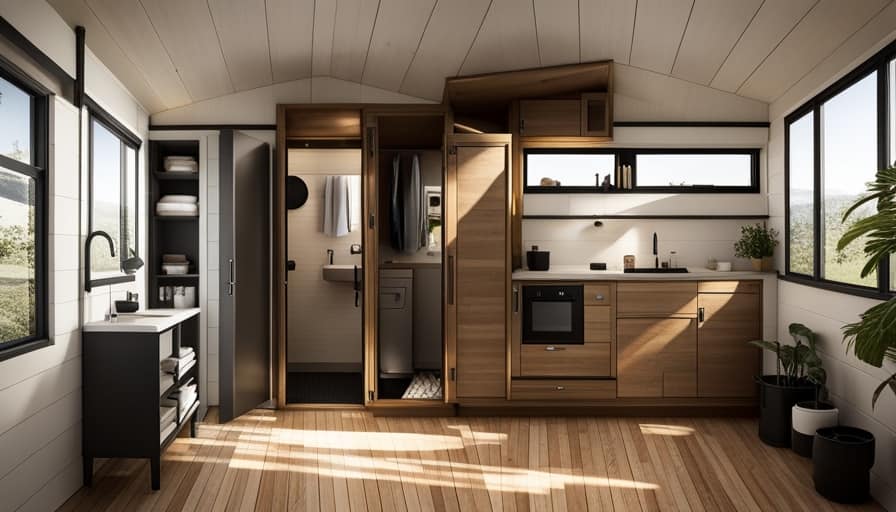
Now, let’s discuss the factors that affect the cost of a tiny house. Size, materials, and customization are the main factors. The larger the size, the more materials and labor will be required, thus increasing the cost. Additionally, using high-quality and sustainable materials can also raise the price. Lastly, customization, such as unique designs or added features, will add to the overall cost.
Exploring Traditional Financing Options
When exploring financing options for a tiny house, it’s important to consider traditional routes such as bank loans or credit unions. These options can provide the necessary funds to purchase or build your dream tiny house. Here are some key points to keep in mind when considering traditional financing options:
-
Traditional bank loans: Many banks offer loans specifically designed for home construction or purchases, which can be used for a tiny house.
-
Personal loans: If you don’t qualify for a traditional bank loan, personal loans from banks or online lenders can be a viable alternative.
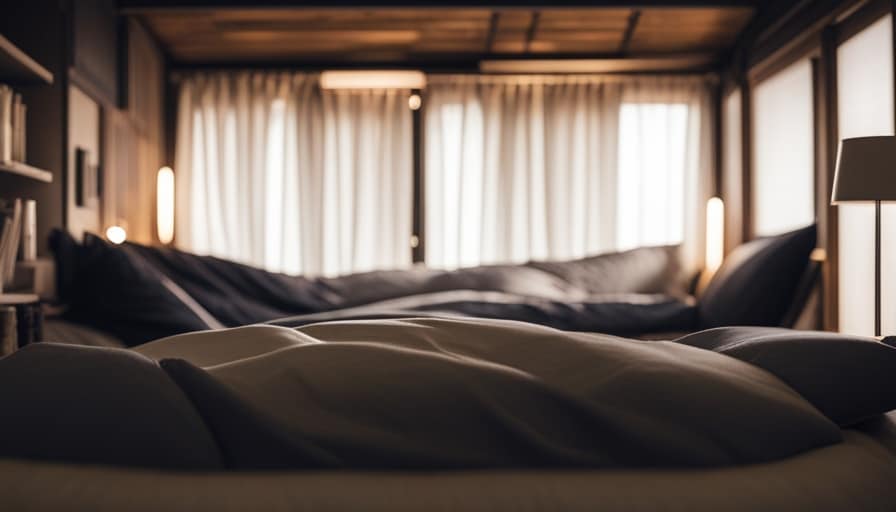
-
Interest rates: Traditional financing options may offer competitive interest rates, depending on your creditworthiness and other factors.
-
Repayment terms: It’s important to carefully review the repayment terms of any loan you consider, including the length of the loan and monthly payment amounts.
-
Eligibility requirements: Different lenders have different eligibility criteria, so it’s important to research and compare options to find the best fit for your needs.
Exploring traditional financing options can provide a solid foundation for financing your tiny house.

However, there are also alternative financing options worth considering, which will be explored in the next section.
Exploring Alternative Financing Options
One option to consider when exploring alternative financing options for a tiny house is crowdfunding. Crowdfunding is a method of raising funds by pooling small amounts of money from a large number of people. It can be a viable option for financing a tiny house as it allows individuals to contribute towards the project. Another alternative financing option is personal loans. Personal loans are loans that are not secured by any collateral, such as a house or car. They can be used to finance a variety of expenses, including the construction or purchase of a tiny house. When considering personal loans, it is important to shop around for the best interest rates and terms. Below is a table comparing crowdfunding and personal loans as alternative financing options for a tiny house:
| Financing Option | Pros | Cons |
|---|---|---|
| Crowdfunding | – Can raise funds from others | – No guarantee of reaching goal |
| Personal Loans | – Can be used for any purpose | – May require good credit score |
Both crowdfunding and personal loans can provide alternative financing options for a tiny house. It is important to carefully consider the pros and cons of each option before making a decision.
Tips for Saving and Budgeting for a Tiny House
Saving and budgeting for a tiny house involves prioritizing expenses and finding ways to cut costs. Here are some practical tips to help you save and budget effectively:

- Create a detailed budget: Start by listing all your expenses and income to determine how much you can allocate towards your tiny house.
- Cut unnecessary expenses: Identify areas where you can reduce spending, such as eating out less or canceling unused subscriptions.
- Save consistently: Set aside a certain amount of money each month specifically for your tiny house fund.
- Consider a tiny house loan: Research options for obtaining a loan specifically designed for tiny house financing.
- Explore crowdfunding options: Crowdfunding platforms can help you raise funds for your tiny house project by reaching out to a wider network of supporters.
By implementing these tips, you can make steady progress towards your goal of owning a tiny house.
Now, let’s explore some resources for grants and financial assistance to further support your journey.
Resources for Grants and Financial Assistance
I can explore various resources for grants and financial assistance to help me finance my tiny house. Grants are a great option to consider, as they provide funding that doesn’t need to be repaid.
There are several organizations and programs that offer grants specifically for individuals looking to build or purchase a tiny house. One such resource is the Tiny House Fund, which provides grants to low-income individuals and families for the construction of tiny houses.

Another option is the Housing Assistance Council, which offers grants to organizations that provide housing assistance to low-income individuals.
It’s important to note that grants availability may vary depending on location and eligibility criteria. Therefore, it’s crucial to research and identify grants that align with your specific needs and circumstances.
Frequently Asked Questions
Can I Use a Personal Loan to Finance a Tiny House?
Yes, you can use a personal loan to finance a tiny house. It’s one of the alternative financing options available. However, make sure to research interest rates and terms to find the best option for you.
Are There Any Specific Qualifications I Need to Meet in Order to Obtain a Traditional Mortgage for a Tiny House?
To obtain a traditional mortgage for a tiny house, you need to meet certain qualifying criteria. The application process requires providing necessary documentation, such as income verification and credit history.
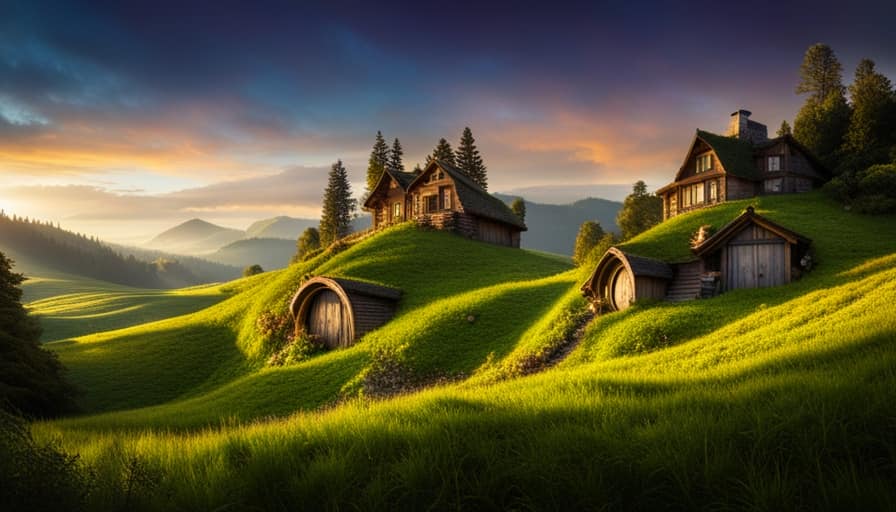
Are There Any Tax Benefits or Incentives Available for Financing a Tiny House?
Tax benefits and incentives can be available when financing a tiny house. It’s important to research and consult with a tax professional to understand the specific benefits that may apply to your situation.
What Are the Advantages and Disadvantages of Using Alternative Financing Options for a Tiny House?
Using alternative financing options for a tiny house has advantages, such as flexibility and lower interest rates, but also disadvantages, like stricter eligibility criteria. It’s important to weigh the pros and cons before deciding.
Are There Any Specific Tips or Strategies for Saving and Budgeting for a Tiny House That Differ From Traditional Homeownership?
When it comes to saving and budgeting for a tiny house, there are some specific tips and strategies that differ from traditional homeownership. Some budgeting strategies include cutting expenses, tracking spending, and setting realistic goals. Additionally, saving techniques like automating savings and finding ways to earn extra income can help you reach your financial goals faster.
Conclusion
In conclusion, financing a tiny house may seem daunting, but with careful planning and research, it can be achievable.

By understanding the costs involved, exploring traditional and alternative financing options, and implementing smart saving and budgeting strategies, you can make your dream of owning a tiny house a reality.
Remember, there are also resources available such as grants and financial assistance programs that can provide additional support.
So don’t let financial barriers hold you back, start exploring your options today and embark on your tiny house journey.
I’m Theodore, and I love tiny houses. In fact, I’m the author of Tiny House 43, a book about tiny houses that are also tree houses. I think they’re magical places where imaginations can run wild and adventures are just waiting to happen.
While tree houses are often associated with childhood, they can be the perfect adult retreat. They offer a cozy space to relax and unwind, surrounded by nature. And since they’re typically built on stilts or raised platforms, they offer stunning views that traditional homes simply can’t match.
If you’re looking for a unique and romantic getaway, a tree house tiny house might just be the perfect option.
Beginners Guides
How Do I Draw a Tiny House
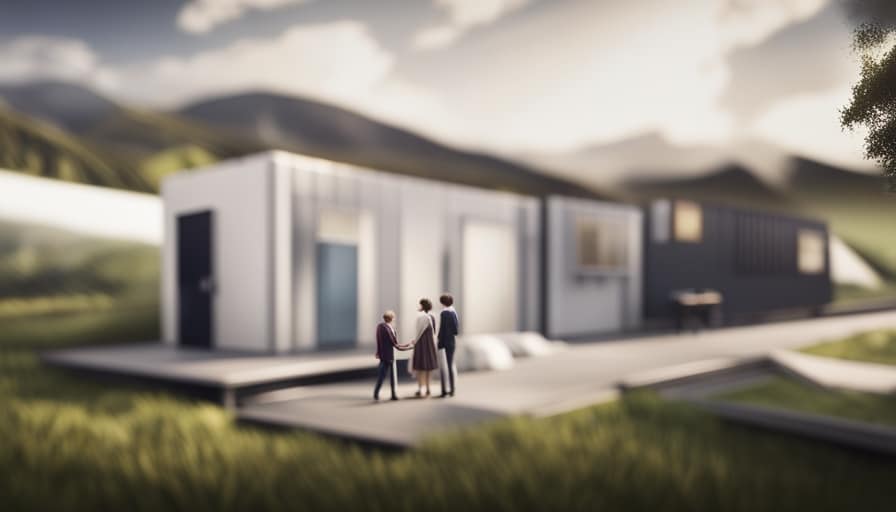
As a future architect, I am constantly captivated by the complexities involved in sketching a small house. It is often said that the beauty lies in the details, and this miniature masterpiece truly exemplifies that sentiment.
In this article, I will guide you through the process of creating a detailed and precise drawing of a tiny house. From understanding the basics of design to adding those finishing touches, you’ll discover how to bring your vision to life on paper.
Let’s dive in and unlock the secrets of drawing a tiny house!
Key Takeaways
- Tiny house design principles prioritize maximizing space in a small footprint and utilizing multi-functional spaces.
- Accurate measurements and choosing the appropriate scale are crucial for a precise and realistic representation.
- Sketching out the layout and floor plan should consider unique storage solutions, placement of windows for natural light, and attention to detail and proportions.
- Adding detail to tiny house elevations can be done by selecting the perfect color palette, incorporating unique architectural elements, and considering light, neutral tones or bold, vibrant colors.
Understanding the Basics of Tiny House Design
As I begin to draw a tiny house, I must first understand the basics of its design. Tiny house design principles are centered around maximizing space in a small footprint. When designing a tiny house, it’s crucial to carefully consider every inch of the layout.

One key principle is to prioritize multi-functional spaces. Each area should serve multiple purposes, such as a living room that can also convert into a bedroom. Storage is another important aspect, with clever solutions like built-in cabinets and hidden compartments. Additionally, utilizing vertical space through lofted areas or tall shelving can help maximize storage and living areas.
Choosing the Right Scale for Your Tiny House Drawing
I should consider the size and dimensions of my tiny house when choosing the right scale for my drawing. Accurate measurements are crucial in creating a precise and realistic representation of my tiny house. By using the correct scale, I can ensure that every element of the design is accurately depicted.
Exploring different design elements for my tiny house scale drawings allows me to experiment with various layouts and configurations. This not only helps me visualize the final result, but also enables me to make informed decisions regarding the placement of furniture, appliances, and other features.
Once I’ve determined the appropriate scale, I can confidently move on to sketching out the layout and floor plan, bringing my tiny house design to life.

Sketching Out the Layout and Floor Plan
Once I’ve chosen the right scale for my tiny house drawing, it’s important to start sketching out the layout and floor plan.
To ensure an efficient use of space, I’ll incorporate unique storage solutions. This can include built-in shelving, hidden compartments, and multi-functional furniture.
Additionally, I’ll carefully consider the placement of windows for optimal natural light. This won’t only enhance the overall ambiance of the tiny house but also reduce the need for artificial lighting during the day.
By strategically positioning windows in areas where sunlight is abundant, I can create a bright and airy atmosphere.

It’s crucial to prioritize both functionality and aesthetics when sketching out the layout and floor plan of a tiny house.
Adding Detail to Your Tiny House Elevations
While adding detail to my tiny house elevations, I’ll focus on incorporating architectural elements that enhance the overall design and character of the house.
One important aspect to consider is selecting the perfect color palette for your tiny house design. The colors you choose can greatly impact the visual appeal and atmosphere of your tiny home. Consider using light, neutral tones to create a spacious and airy feel, or bold and vibrant colors to add a pop of personality.
In addition to color, incorporating unique architectural elements into your tiny house elevation can make it stand out. Whether it’s a charming bay window, a decorative trim, or an interesting roofline, these elements can add visual interest and character to your tiny home.

By carefully selecting colors and incorporating unique architectural elements, you can create a tiny house elevation that’s both visually appealing and reflective of your personal style.
Now, let’s move on to finalizing your tiny house drawing with finishing touches.
Finalizing Your Tiny House Drawing With Finishing Touches
Adding decorative details and selecting the right materials are key steps in finalizing your tiny house drawing with finishing touches. To ensure your tiny house design truly stands out, consider the following:
-
Selecting the perfect color palette: Choose colors that reflect your personal style and create an inviting atmosphere. Consider using light and neutral tones to make the space feel larger, or vibrant shades to add a pop of energy.

-
Incorporating sustainable and eco-friendly elements: Make your tiny house environmentally friendly by incorporating features such as solar panels, rainwater harvesting systems, and energy-efficient appliances. Use recycled or reclaimed materials whenever possible to reduce waste and minimize your environmental footprint.
-
Adding unique architectural details: Consider incorporating unique architectural elements like exposed beams, arched windows, or a charming front porch to give your tiny house character and charm.
-
Enhancing with landscaping: Don’t forget about the exterior! Enhance your tiny house design with landscaping elements such as flower beds, shrubs, or a small vegetable garden. This will add curb appeal and create a welcoming outdoor space.
Frequently Asked Questions
What Are Some Common Challenges or Obstacles to Consider When Designing a Tiny House?
When designing a tiny house, it is important to consider common challenges and obstacles such as space optimization and design challenges. These factors require precise planning and attention to detail to ensure optimal functionality and livability.
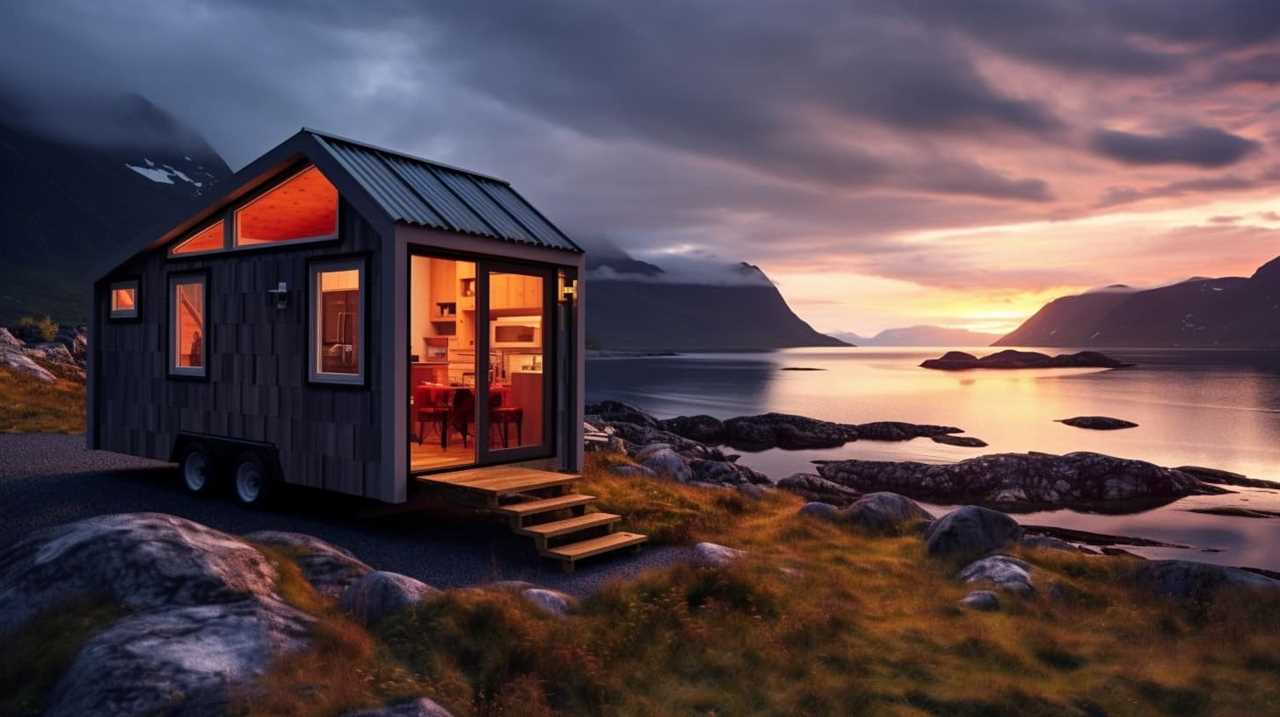
Can I Use Software or Online Tools to Create My Tiny House Drawing?
Yes, you can use software or online tools to create your tiny house drawing. It is best to follow these practices for creating detailed designs: utilize accurate measurements, incorporate necessary features, and ensure proper scaling for a realistic representation.
Are There Any Specific Building Codes or Regulations That I Should Be Aware of When Designing a Tiny House?
When designing a tiny house, it is important to be aware of building code requirements and zoning restrictions. These regulations ensure the safety and legality of your structure, so it’s crucial to familiarize yourself with them before starting your design process.
How Do I Incorporate Sustainable and Eco-Friendly Features Into My Tiny House Design?
To incorporate sustainable and eco-friendly features into my tiny house design, I can use eco-friendly materials like reclaimed wood and recycled insulation. Additionally, I can install energy-efficient systems such as solar panels and a rainwater harvesting system.
Are There Any Recommended Resources or Communities for Further Inspiration and Support in Designing a Tiny House?
There are recommended resources and communities for inspiration and support in tiny house design. Check out tiny house design competitions and online forums for enthusiasts. They provide valuable insights and connections for your project.

Conclusion
In conclusion, drawing a tiny house requires understanding the basics of design, choosing the right scale, and sketching out the layout and floor plan.
By adding detail to the elevations and finalizing the drawing with finishing touches, you can create a precise and detailed representation of your dream tiny home.
Just like a skilled architect carefully crafts a blueprint, your tiny house drawing will serve as the foundation for turning your vision into reality.
I’m Theodore, and I love tiny houses. In fact, I’m the author of Tiny House 43, a book about tiny houses that are also tree houses. I think they’re magical places where imaginations can run wild and adventures are just waiting to happen.
While tree houses are often associated with childhood, they can be the perfect adult retreat. They offer a cozy space to relax and unwind, surrounded by nature. And since they’re typically built on stilts or raised platforms, they offer stunning views that traditional homes simply can’t match.
If you’re looking for a unique and romantic getaway, a tree house tiny house might just be the perfect option.
Beginners Guides
How Do I Find a Tiny House for Sale for Adults

I’m always searching for the ideal tiny home. It feels like finding a needle in a haystack, but with the right approach, it can be done.
In this article, I’ll guide you through the process of finding a tiny house for sale that’s perfect for adults. From exploring online listings to connecting with builders and attending workshops, you’ll discover all the tips and tricks to make your dream of owning a tiny house a reality.
Let’s get started!
Key Takeaways
- The internet offers a wide range of options for finding tiny houses for sale, with online listings providing information on financing options and customization choices.
- Connecting with builders and companies can provide valuable information on purchasing and customizing a tiny house, as well as guidance on building regulations and permits.
- Utilizing social media and online communities can help tap into a network of like-minded individuals, gain recommendations, and access valuable insights and resources from the tiny house community.
- Attending workshops and events can provide education on financing options, networking opportunities, and exposure to the latest trends and designs in the tiny house community.
Exploring Online Listings and Websites
I can start my search for a tiny house by browsing through online listings and websites. The internet offers a vast array of options when it comes to finding a tiny house for sale. Not only can I explore different listings, but I can also learn more about the financing options available for tiny homes.

Many websites provide information on loans, grants, and other financial resources that can help make owning a tiny house a reality. Additionally, these online platforms showcase a variety of tiny house designs and customization options, allowing me to find a home that suits my preferences and needs.
Connecting With Tiny House Builders and Companies
By reaching out to tiny house builders and companies, I can explore my options and gather more information about the process of purchasing and customizing a tiny house. These professionals have extensive knowledge and expertise in building tiny houses and can guide me through the entire process.
When connecting with them, it’s important to inquire about building regulations to ensure that my tiny house meets all the necessary requirements. They can provide valuable insights and advice on navigating through the complexities of local zoning laws and permits.
Additionally, they can also offer information on financing options, such as loans or payment plans, to help make owning a tiny house more accessible.
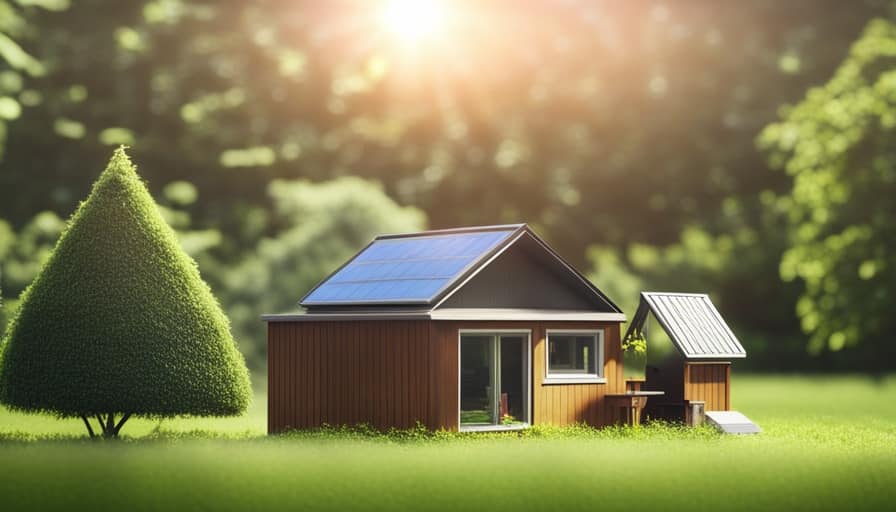
Utilizing Social Media and Online Communities
One can utilize social media and online communities to connect with fellow tiny house enthusiasts and discover potential listings for tiny houses for sale. Joining local groups on platforms like Facebook or Reddit can provide a wealth of information and resources. These groups often have members who are actively involved in the tiny house community and can offer valuable insights and recommendations. Engaging with these communities allows you to tap into a network of individuals who share your passion for tiny living and can guide you towards finding the perfect tiny house for sale.
Don’t hesitate to ask for recommendations within these groups, as members are usually more than willing to share their experiences and knowledge. By leveraging the power of social media and online communities, you can greatly increase your chances of finding the ideal tiny house for sale.
Now that we’ve explored the benefits of utilizing social media and online communities, let’s delve into the next step of the process – attending tiny house workshops and events.
Attending Tiny House Workshops and Events
To expand your knowledge and network in the world of tiny houses, consider attending workshops and events that focus on this unique lifestyle. These gatherings provide valuable opportunities to learn from experts, connect with like-minded individuals, and gain insight into the latest trends and innovations in the tiny house community. Here are three reasons why attending these workshops and events is beneficial:

-
Education: Workshops and events offer a wealth of information on various topics, including tiny house financing options. You can learn about different financing methods, such as loans, grants, and crowdfunding, to help make your tiny house dream a reality.
-
Networking: Meeting fellow enthusiasts and professionals in the industry is a great way to expand your network. You can exchange ideas, share experiences, and potentially find partners or mentors who can guide you through the process of building a tiny house on a foundation.
-
Inspiration: By attending workshops and events, you’ll be exposed to a wide range of tiny house designs and styles. This exposure can inspire you to think creatively and find innovative solutions for your own tiny house project.
Considering Alternative Options for Tiny House Living
I’ve explored various tiny house options, but my favorite alternative is living in a converted shipping container. Not only are shipping containers affordable and readily available, but they also provide a unique and eco-friendly living space.

One of the best aspects of living in a converted shipping container is the opportunity to join tiny house communities. These communities are designed to foster a sense of connection and support among residents, creating a tight-knit community where everyone looks out for each other.
Additionally, renting options for converted shipping containers are becoming more popular, allowing individuals to experience the benefits of tiny house living without the commitment of purchasing a property. This flexibility is perfect for those who want to try out the lifestyle before fully committing.
Frequently Asked Questions
Are There Any Specific Regulations or Zoning Requirements for Placing a Tiny House on a Property?
Regulations and zoning requirements vary depending on the location. Before placing a tiny house on a property, it is important to research and comply with local laws. Consulting with a real estate professional can provide guidance in navigating these regulations.
What Are Some Common Challenges or Considerations When It Comes to Financing a Tiny House?
When it comes to financing a tiny house, there are several challenges to consider. Affordability is a major concern, as well as finding lenders who understand the unique nature of tiny homes.
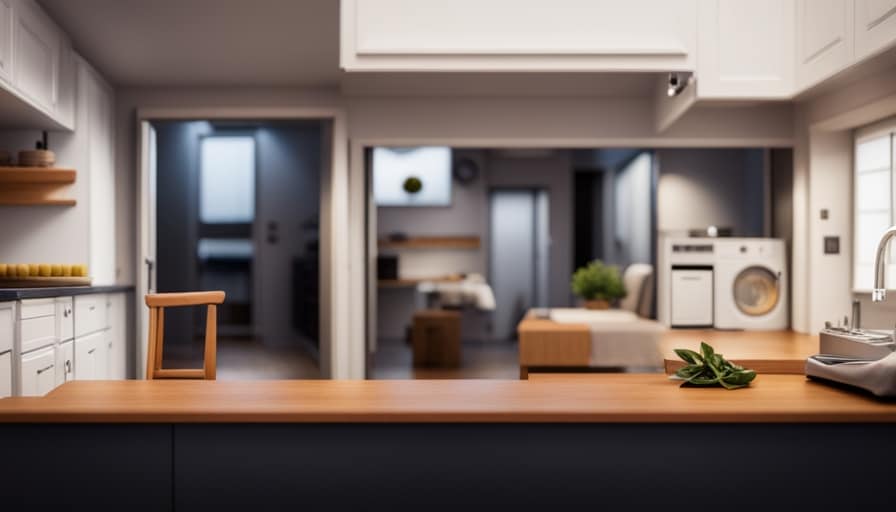
Can I Customize or Personalize a Pre-Built Tiny House From a Builder?
Yes, you can customize or personalize a pre-built tiny house from a builder. It allows you to tailor the design and features to your preferences, making it a unique and personalized space.
Are There Any Specific Insurance Considerations for Owning a Tiny House?
Insurance coverage for tiny houses requires considering their unique features and potential risks. It’s important to research insurance providers who specialize in tiny house coverage to ensure you have the right protection for your investment.
How Do I Navigate the Process of Finding Land or a Community to Park My Tiny House In?
Finding land or a community to park my tiny house in can be challenging. Research online platforms, local real estate agents, and tiny house communities. Visit potential locations, ask questions, and consider factors like zoning regulations and amenities.
Conclusion
In conclusion, there are several ways to make finding a tiny house for sale for adults easier. These include exploring online listings and websites, connecting with builders and companies, utilizing social media and online communities, and attending workshops and events.

One effective method is to search for tiny houses for sale through online listings and websites. There are dedicated platforms that specialize in listing tiny houses, making it convenient to browse through various options and compare prices and features.
Another option is to connect directly with builders and companies that specialize in constructing and selling tiny houses. Many builders have websites where they showcase their designs and provide information on how to purchase or customize a tiny house according to specific needs and preferences.
Utilizing social media and online communities can also be helpful in finding a tiny house for sale. There are groups and pages dedicated to tiny house living where individuals can connect with others who are selling or buying tiny houses. These platforms provide a space for sharing information, asking questions, and even finding potential sellers or buyers.
Attending workshops and events related to tiny house living is another valuable way to find a tiny house for sale. These events often feature displays of different tiny house designs and provide an opportunity to meet builders, sellers, and other individuals who are passionate about tiny house living.

It’s interesting to note that the popularity of tiny house living is on the rise. According to a survey conducted by Tiny House Community, the number of adults opting for tiny house living has increased by 67% in the past five years. This statistic highlights the growing appeal and interest in this alternative lifestyle.
Overall, by utilizing online resources, connecting with builders and companies, engaging with social media and online communities, and attending workshops and events, adults can make the search for a tiny house for sale much easier.
I’m Theodore, and I love tiny houses. In fact, I’m the author of Tiny House 43, a book about tiny houses that are also tree houses. I think they’re magical places where imaginations can run wild and adventures are just waiting to happen.
While tree houses are often associated with childhood, they can be the perfect adult retreat. They offer a cozy space to relax and unwind, surrounded by nature. And since they’re typically built on stilts or raised platforms, they offer stunning views that traditional homes simply can’t match.
If you’re looking for a unique and romantic getaway, a tree house tiny house might just be the perfect option.
-

 Beginners Guides1 week ago
Beginners Guides1 week agoHow To Buy A Tesla Tiny House
-

 Energy Efficiency1 month ago
Energy Efficiency1 month agoBest Tiny Homes For Cold Climates
-

 Beginners Guides6 days ago
Beginners Guides6 days agoTiny House Nation Where Are They Now Stephanie
-

 Tiny House Resources (e.g., legalities, cost, insurance, FAQs)2 months ago
Tiny House Resources (e.g., legalities, cost, insurance, FAQs)2 months agoDo Tiny Homes Need Planning Permission?
-

 Beginners Guides2 weeks ago
Beginners Guides2 weeks agoFrom The Show Tiny House Nation How Many Keep Their Tiny House?
-

 Beginners Guides2 months ago
Beginners Guides2 months agoUsing a Climbing Net For Treehouse Construction
-

 Beginners Guides2 months ago
Beginners Guides2 months agoHow to Build a Treehouse Without Drilling Into the Tree
-
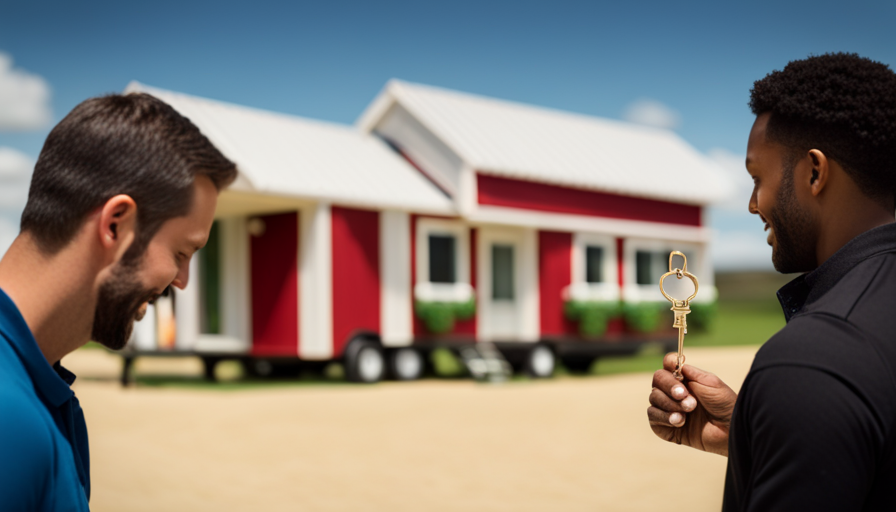
 Beginners Guides3 weeks ago
Beginners Guides3 weeks agoTiny House Nation Who Pays For The Houses






